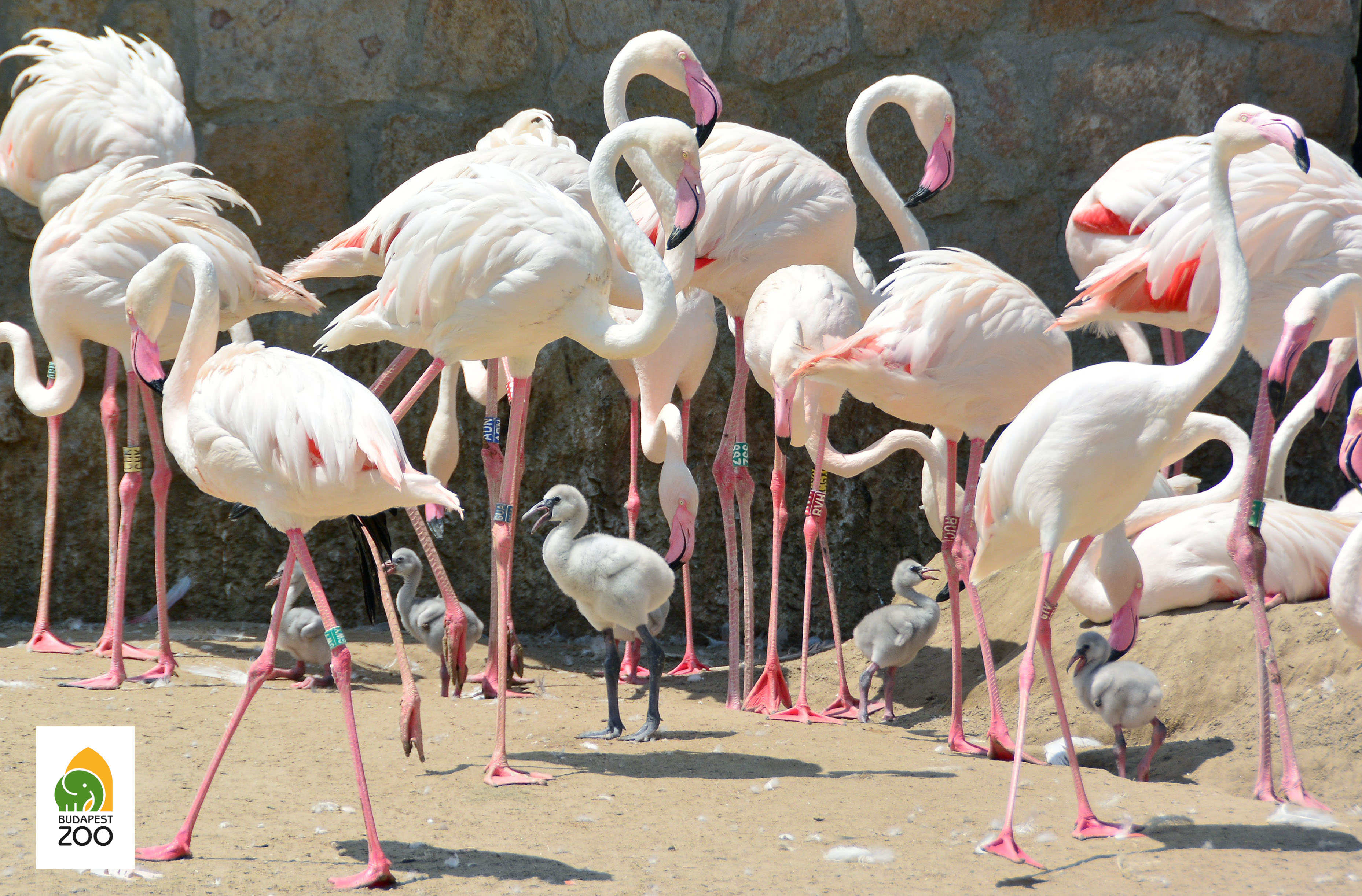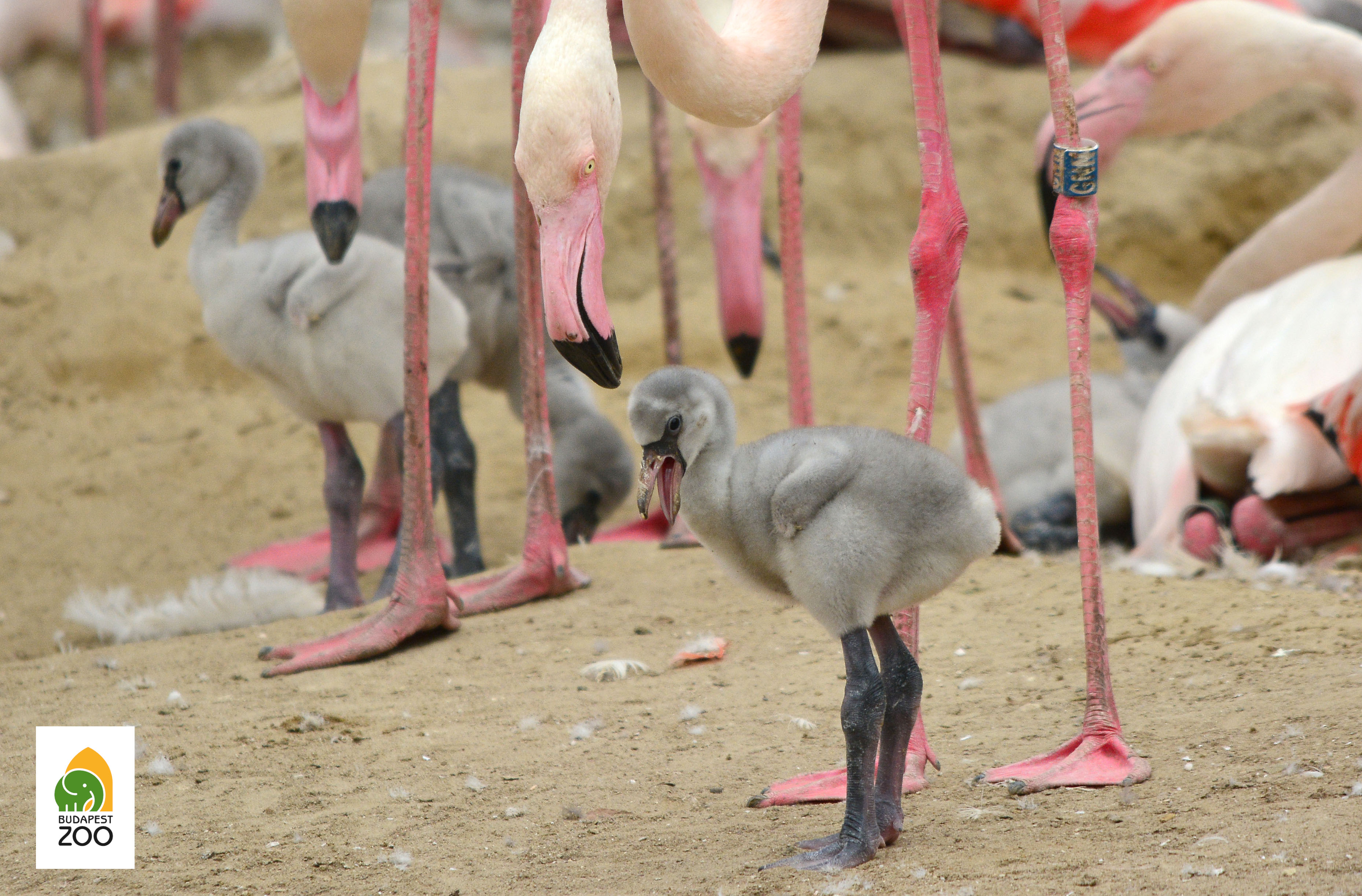Flamingo chicks are hatching July 9, 2019

Due to the unusually cool May, our flamingos started nesting a bit later than last year, so chicks started to hatch somewhat later as well. This year, the first baby flamingo pecked its way through its egg shell two weeks ago, and over the past one week it was followed by more and more chicks. For the time being, 14 baby flamingos can be spotted amongst the slender legs of the adult flamingos but, as more than ten eggs are being incubated right now, more offspring is expected to hatch in the coming days.
Flamingos have a genuinely extraordinary way of breeding and raising their chicks. They build their typical nests from sand and 
Baby flamingos look completely different from grown-ups: not only are they smaller, but they also have a completely different appearance. The few-day-old or one-two-week-old birds are covered in grey, fluffy feathers; they have relatively swollen legs and their bills are nearly completely straight, which is different from the typical downturned bill of grown-up flamingos. This also means that flamingo offspring, in the first few months of their lives, are not able to strain off living organisms floating in the water, on which grown-up flamingos feed. Instead, the adult flamingos feed them crop milk, which is secreted in their upper digestive tract; this is what they drip into the beak of the baby bird. Those devoting some time to observing flamingo chicks will see all this with their own eyes at our Zoo.